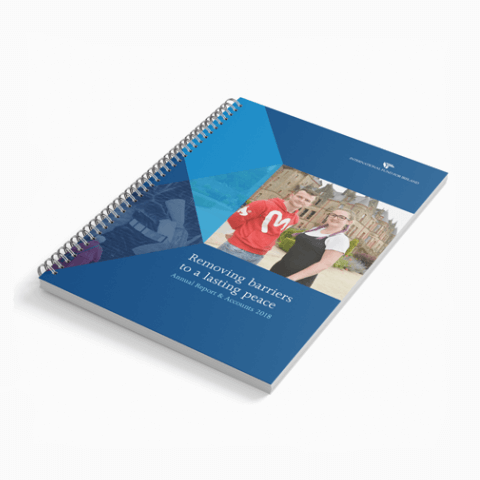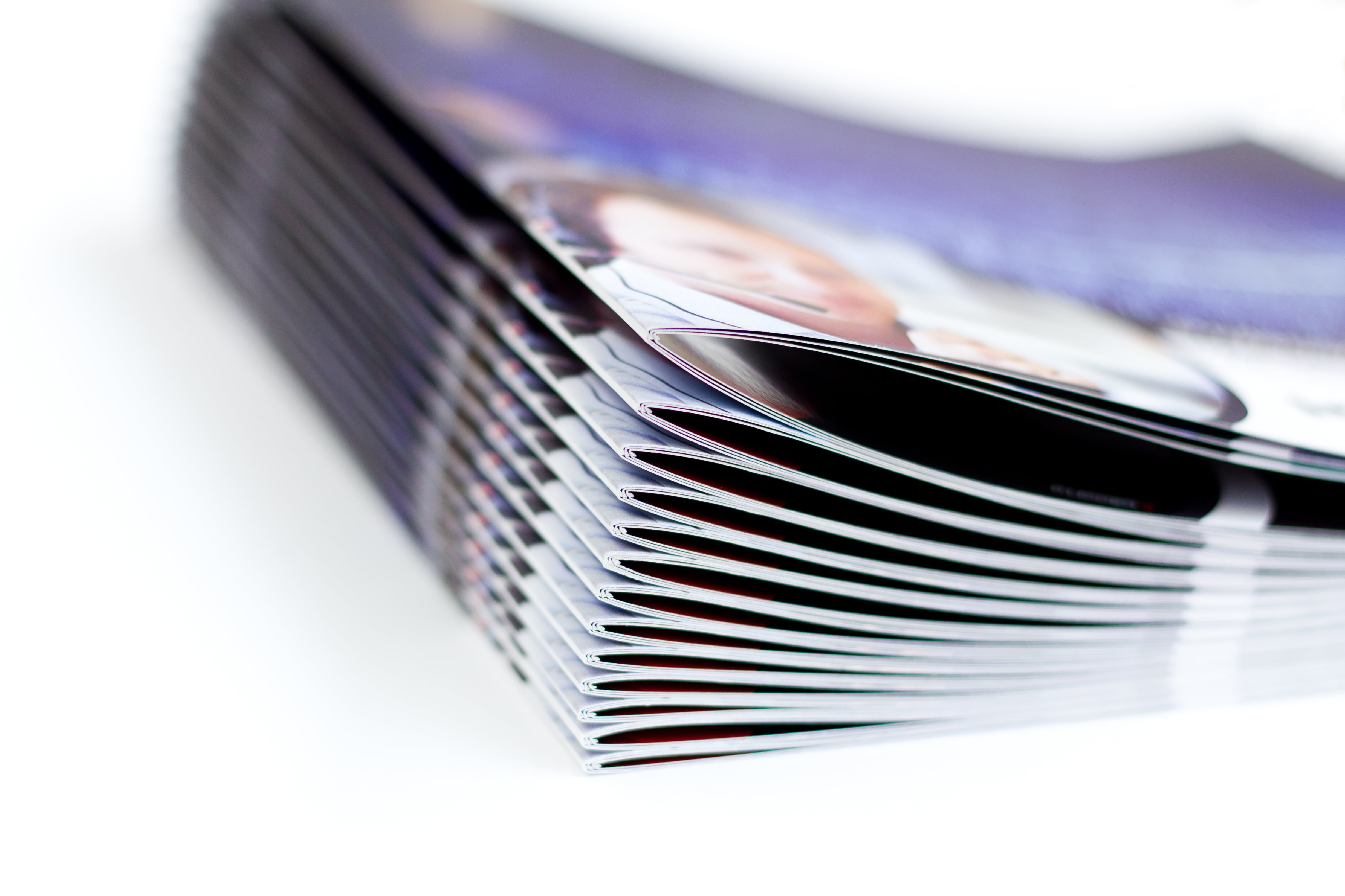The Important Guide to Recognizing Pamphlet Printing Options and Techniques
The procedure of booklet printing includes multiple factors to consider that can substantially affect the end product. From choosing the suitable format and dimension to comprehending the subtleties of binding approaches, each choice plays a vital duty. In addition, elements such as paper stock and printing strategies additional influence the effectiveness of the pamphlet. As one browses these options, it ends up being crucial to understand just how they interconnect and what that means for the overall result.
Comprehending Booklet Layouts and Dimensions
When considering booklet printing, understanding the different layouts and dimensions readily available is crucial for attaining the wanted presentation. Brochures can be produced in many layouts, consisting of saddle-stitched, spiral-bound, and perfect-bound, each offering distinctive advantages. Usual dimensions range from basic letter (8.5 x 11 inches) to smaller options like A5 (5.8 x 8.3 inches), permitting adaptability based upon web content and target audience.Selecting the suitable size can influence both the layout and viewers involvement. Bigger dimensions might suit visually driven material, while smaller styles might be extra portable and straightforward. Furthermore, the variety of pages influences the option of binding technique, as thicker brochures may need sturdier bindings. Ultimately, recognizing these aspects enables a much more tailored strategy, ensuring that the end product aligns with the designated message and aesthetic, boosting the general performance of the interaction.
Picking the Right Paper Supply

Binding Approaches: Choices and Factors To Consider
When it concerns binding methods for brochures, a number of options are available, each with distinctive advantages. Saddle stitch binding provides an affordable solution for thinner brochures, while perfect binding strategies give a more polished try to find thicker magazines. Wire-O binding stands apart for its durability and convenience of use, making it suitable for records that need versatility.
Saddle Stitch Binding
Saddle stitch binding supplies a sensible and cost-effective remedy for setting up pamphlets, making it a popular option amongst authors and services. This binding approach includes folding sheets of paper in fifty percent and stapling them along the fold line, creating a orderly and neat appearance. Normally ideal for pamphlets with a lower web page count, saddle sewing is perfect for magazines, sales brochures, and educational materials. The simpleness of this technique allows for quick manufacturing and is often preferred for brief runs or marketing products. However, it is necessary to keep in mind that saddle stitch binding may not be ideal for thicker booklets, as the back might not hold up under enhanced weight. On the whole, it stays a trustworthy choice for several printing jobs.
Perfect Binding Techniques
Perfect binding is a widely utilized technique that supplies a polished and professional finish to magazines and booklets. This method entails gluing the web pages together at the spine making use of a solid adhesive, enabling a clean edge and the capability to hold a larger variety of web pages compared to saddle stitching. Perfect binding is specifically appropriate for thicker booklets, such as directories and annual records, where a sturdy, flat spine is wanted. Additionally, it provides the option for a printed cover that can be developed to improve visual charm. Nevertheless, factors to consider such as page matter, paper weight, and the meant use the brochure need to be taken into account, as they can impact longevity and total high quality.
Wire-O Binding Alternatives
Wire-O binding, recognized for its resilience and versatility, supplies an excellent option for brochures that require simple web page transforming and an expert appearance. This binding method employs a series of steel loopholes that hold web pages safely, permitting them to exist flat when open. It is especially appropriate for discussions, manuals, and brochures as a result of its durable nature. Wire-O binding is readily available in numerous shades and diameters, fitting different web page matters and thicknesses. Additionally, it allows the addition of covers and tabs, enhancing the brochure's total visual. Factors to consider for Wire-O binding include the choice of wire color, the dimension of the loops, and the degree of personalization preferred, all of which can exceptionally influence the end product's appearance and performance.
Digital vs. Offset Printing: Which Is Best for You?
When picking a printing approach for pamphlets, recognizing the distinctions in between electronic and balance out printing is important. Digital printing uses modern innovation to create top quality prints quickly and cost effectively, making it suitable for short runs or jobs needing quick turn-around times. It enables customization, supplying the ability to print on-demand with very little waste.In comparison, balance out printing is a typical technique that excels in producing big amounts with constant high quality. It involves moving ink from a plate to a rubber blanket, then to the paper, which leads to precise details and vibrant shades. Nonetheless, offset printing commonly needs longer arrangement times and is extra cost-efficient for larger volumes.Ultimately, the option between electronic and balance out printing depends on project needs, spending plan, and desired quantity. For little, time-sensitive jobs, electronic may be the finest option, while offset might be better for larger, top quality manufacturings.

Designing Your Pamphlet: Tips and Finest Practices
When designing a booklet, cautious interest to design, font selection, and color use can substantially enhance its effectiveness. A well-structured format guides the viewers's eye, while appropriate font styles guarantee readability and share the wanted tone. Additionally, reliable use color can evoke emotions and emphasize vital information, making the total layout extra impactful.
Choosing the Right Layout
Just how can one efficiently choose the ideal layout for a booklet? It is essential to review the brochure's objective and target audience. A clean, arranged format improves readability and involvement. Making use of a grid system can aid in straightening components regularly, creating a specialist appearance. Additionally, incorporating aesthetic power structure with differing sizes and positionings of pictures and text can assist the reader's eye and stress essential details. It is also essential to leave sufficient white space, which protects against congestion and permits much better focus. Ultimately, checking different designs through mock-ups can offer understanding right into exactly how the design carries out in real-world situations, ensuring that the end product satisfies both aesthetic and practical needs.
Selecting Ideal Fonts
A well-chosen font style can significantly enhance the overall design of a brochure, enhancing the design and strengthening the material's message. The selection of typefaces must think about readability, specifically for body message, as it assures the details is easily accessible to all viewers. Sans-serif fonts are often liked for digital formats, while serif typefaces can lend a traditional feeling in printed products. It's suggested to restrict font selections to two or three to maintain visual comprehensibility. Furthermore, font style size plays a vital function; headings must be not frustrating but unique, while body text need to fit for analysis. When picking font styles, positioning with the pamphlet's style and target audience is essential for effective communication and aesthetic allure.
Reliable Use of Color
Shade functions as a powerful device in brochure layout, assisting and forming understandings viewers emotions. It can evoke feelings of calmness, depend on, or exhilaration, depending upon the colors selected. Designers must consider shade concept concepts, ensuring that the selected combination lines up with the pamphlet's message and target market. For instance, utilizing warm shades Click Here like red and orange can create seriousness, while cooler tones like blue and environment-friendly foster tranquility.Additionally, comparison plays a crucial role; corresponding shades can improve readability and visual allure. Uniformity in color usage across web pages even more enhances brand identification and cohesion. Eventually, effective color implementation not just catches interest yet additionally reinforces the booklet's objective, making it a crucial aspect of effective style.
Completing Touches: Coatings and Unique Impacts
While numerous take into consideration the content and layout of a brochure the most essential components, the finishing touches, such as finishings and special effects, play a crucial function in enhancing its overall appeal. Coatings can give defense and durability, guaranteeing that the pamphlet endures damage. Matte surfaces use an innovative, non-reflective surface, while glossy layers can make colors appear even more distinctive and vibrant. Unique effects, like embossing or foil stamping, include a responsive dimension that can produce a remarkable impression. These techniques can highlight particular locations, accentuating essential details or producing visual interest. Additionally, UV finish can supply a high-shine coating that elevates the overall look.Together, these completing touches not only improve the booklet's aesthetic yet additionally connect professionalism and trust and interest to detail, ultimately leaving an enduring influence on the reader.
Expense Considerations for Brochure Printing
Understanding the various expense considerations for brochure printing is necessary for organizations and businesses intending to maximize their budget plans. Secret elements affecting expenses consist of the choice of ink, binding, and paper methods. Better products, such as exceptional paper or specialized inks, commonly enhance the general expenditure. Furthermore, the size and page matter of the brochure play a click this significant duty; bigger pamphlets need even more resources and time to produce.Another essential factor to consider is the printing strategy, whether digital or offset, as each has its very own prices structure and viability for different amounts. Services must additionally consider design costs, which can differ based on intricacy and making use of expert services. Inevitably, shipping and handling fees can include in the total, especially for large orders. By assessing these aspects, organizations can make enlightened decisions that line up with their financial abilities while achieving the desired top quality in their published materials.
Regularly Asked Concerns
What Are the Ecological Effects of Booklet Printing?
The environmental effects of booklet printing include deforestation from paper manufacturing, carbon discharges from transportation, and waste generation from discarded products - Booklet Printing. Lasting practices, such as making use of recycled paper and environmentally friendly inks, can reduce these effects
Exactly How Can I Make Certain Color Precision in My Brochure?
To assure shade accuracy in a booklet, one need to use calibrated displays, use specialist color profiles, carry out test prints, and pick top quality printing solutions that use shade matching and proofing alternatives for finest results.
What Is the Normal Turnaround Time for Booklet Printing?
The typical turn-around time for pamphlet printing differs relying on the intricacy and quantity - Booklet Printing. Normally, it ranges from a couple of days to two weeks, influenced by factors such as publishing methods and ending up needs
Are There Minimum Order Quantities for Pamphlet Printing?

Can I Publish Pamphlets in Several Languages?
Printing booklets in multiple languages is feasible. Many printing services supply alternatives for bilingual or multilingual formats, permitting efficient communication. Cautious planning guarantees that develop elements suit different languages without endangering readability or aesthetic appeals. In addition, factors such as paper stock and printing strategies additional affect the effectiveness of the brochure. When considering pamphlet printing, understanding the different layouts and sizes offered is essential for achieving the desired presentation. When picking a printing approach for pamphlets, recognizing the distinctions in between more digital and counter printing is crucial. Additionally, the dimension and page count of the pamphlet play a considerable function; bigger brochures require even more sources and time to produce.Another crucial consideration is the printing technique, whether electronic or countered, as each has its own pricing structure and viability for various quantities. The environmental influences of brochure printing include deforestation from paper manufacturing, carbon discharges from transportation, and waste generation from discarded products.